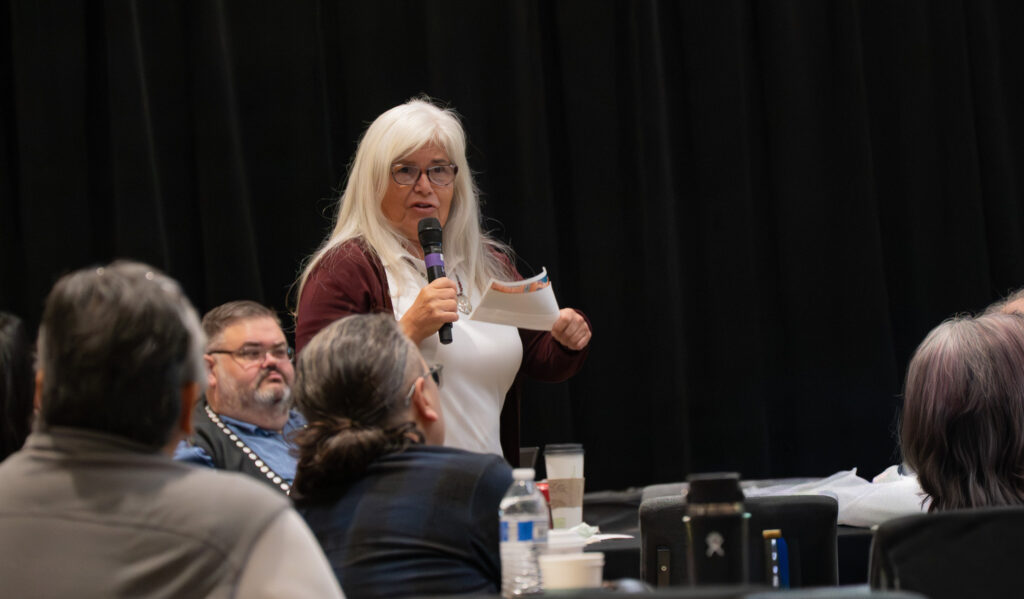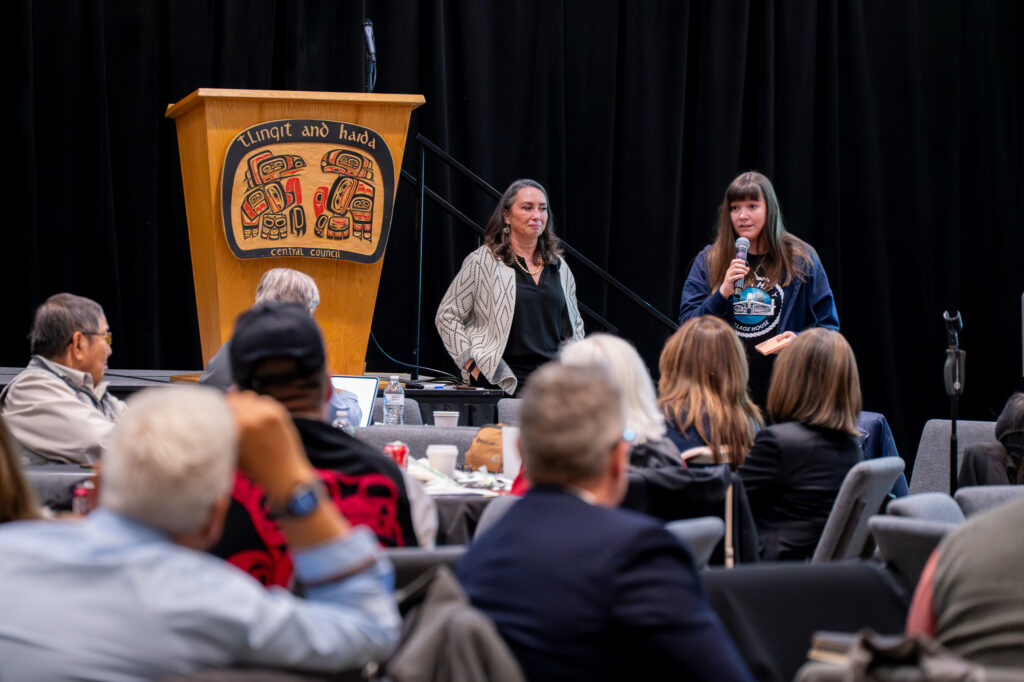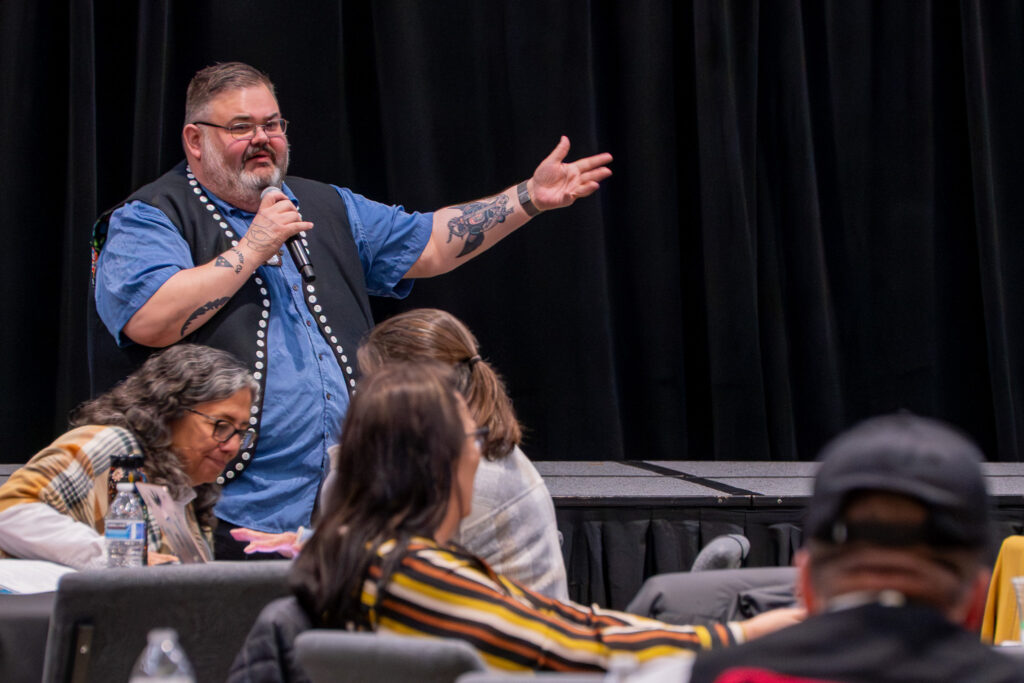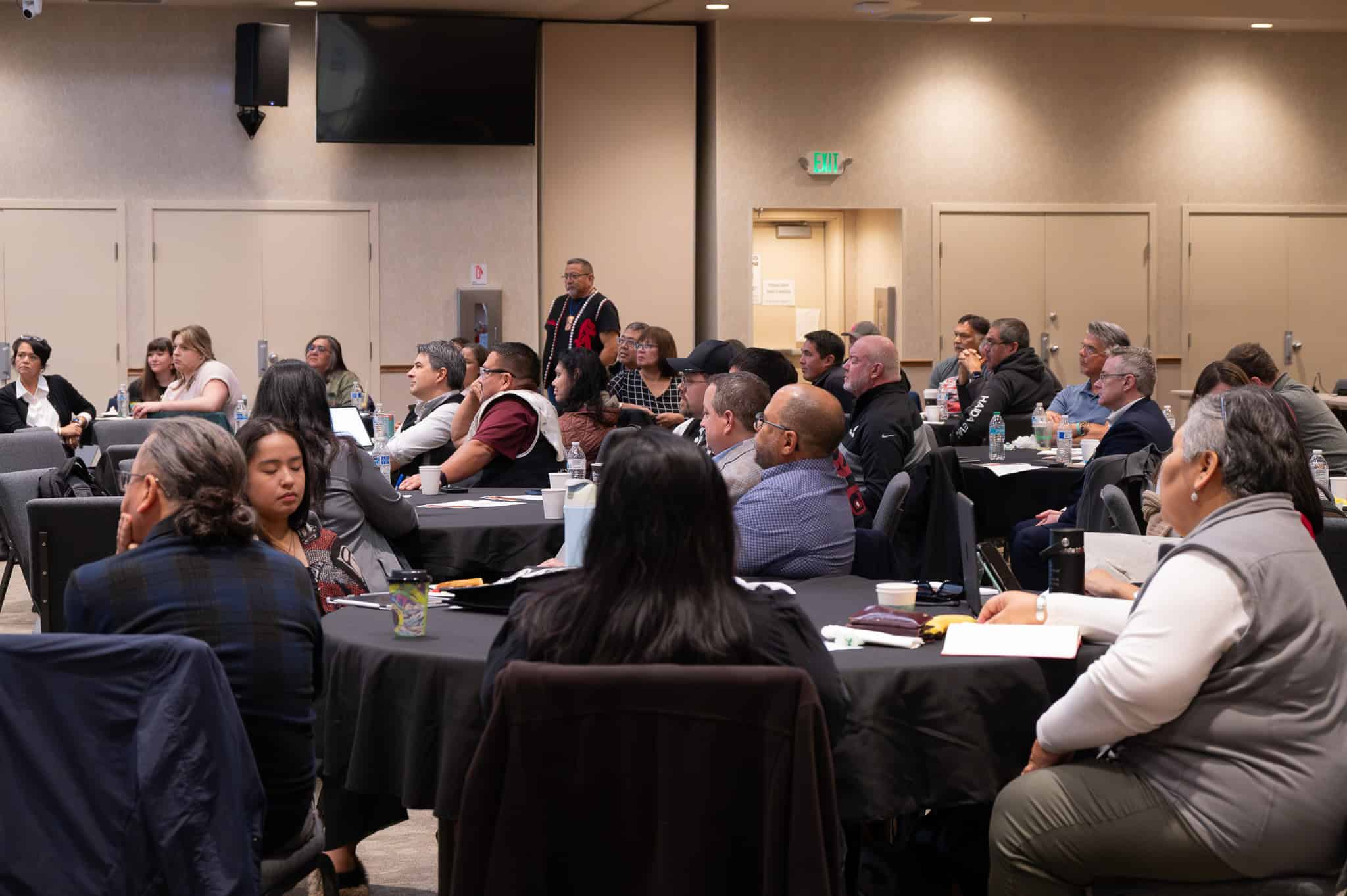
For the first time in decades, leaders from Southeast Alaska’s tribes, Native corporations and tribal organizations came together in Juneau, Alaska for a Native Roundtable. Held September 29–30, 2025, the two-day summit created a powerful platform for renewed collaboration, strategic dialogue and collective visioning around the most pressing issues facing the region’s communities. More than just a meeting, the gathering marked a meaningful step toward strengthening relationships, sharing perspectives and rebuilding lines of communication across the region.
“Over these two days, we have seen the strength that comes when leaders in our region come together—listening, sharing and shaping a future for the generations yet to come,” said Tlingit & Haida President Chalyee Éesh Richard Peterson. “This roundtable marks the start of a renewed commitment to stand united, amplify our collective voice, and ensure our children and grandchildren inherit a future rooted in who we are as Tlingit, Haida and Tsimshian people.”
Key Themes and Priorities Identified
Discussions centered around three overarching themes: Unity & Shared Vision, Protecting Our Way of Life and Investing in Our People (focusing on housing, workforce development, education and health). Multiple “Regional Priorities Dialogue & Action Planning” sessions led to the identification of six top priority areas for regional collaboration.
- Lands, Waters & Subsistence: Advancing responsible stewardship of the Tongass National Forest and addressing the Roadless Rule, confronting transboundary mining threats, securing subsistence rights under ANILCA and advancing co-management strategies.
- Housing & Infrastructure: Declaring the housing shortage a crisis and committing to exploring a tribally owned ferry system, advocating in state transportation planning and upgrading critical infrastructure for water, energy and communications.
- Youth, Education & Workforce: Focusing on paid apprenticeships (citing the Generations Southeast model), creating pathways for youth leadership and investing heavily in cultural and language revitalization as core educational components.
- Health, Safety & Wellness: Addressing fentanyl, substance abuse and suicide with urgency, protecting Medicaid access and expanding mental health services and cultural healing practices.
- Economic Sovereignty: Working to build self-sustaining local economies, developing cultural tourism and renewable energy initiatives and ensuring fisheries and permits primarily benefit local communities.
- Advocacy & Representation: Strengthening regional coordination through the Alaska Federation of Natives (AFN), establishing a regional legal fund for protection issues and focusing on electing leaders who reflect Native values.
“We came together with a shared commitment to unity and respect,” said Sealaska Chairman Richard Rinehart. “That’s what makes our people strong. When we work side by side and lead with our values, we can take on the challenges in front of us from housing, healthcare, education, opportunity and everything in between. This is how we build a better future for our children and the generations to come.”
Cultural Highlights
Powerful moments of cultural resilience enriched the gathering, including a moving performance from the Tlingit & Haida elders dance group, many of who are learning or relearning songs and dances. Leaders also honored Orange Shirt Day (“Every Child Matters”), anchoring the unification in reflection, resilience and responsibility to future generations.
Moving Forward Together
While this gathering brought together 35 organizations and focused on building relationships and opening dialogue, leaders agreed these conversations must continue. Plans are underway to make the Roundtable a space that creates a permanent forum for Southeast Alaska Native communities to collaborate and strategize.



